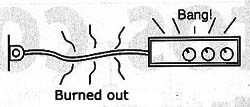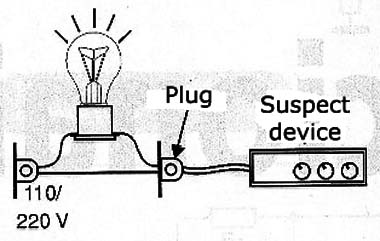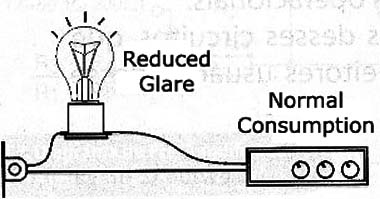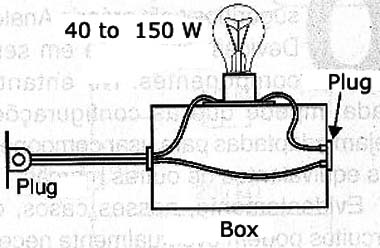A serious problem in many electrical and electronic equipment in common use is the short circuit. One or more components come in short, causing the input fuse burning.
If we replace the blown fuse, and we connect the equipment to the power grid we run the risk of having a new short with the fuse burning. The worst case occurs when the equipment does not have the protection fuse and in case of short, your network connection causes a strong current can destroy components and even jeopardize the integrity of the installation and the professional who is next, because a strong burst will occur, as shown in figure 1.

One important way to diagnose faults on devices that manifest this problem, or even an excess of consumption, is to make your connection in any type of equipment to limit the circulating current.
With a lower current, we will not have the fuse burning, not put at risk the installation and the technical person itself and, moreover, we can examine the live circuit, detecting any problems that may be caused by individual components.
The best way to do this limitation is by connecting the equipment in series with an appropriate value of resistor. A pure resistive load does not affect the device's operating characteristics, endangering sensitive components.
Wire resistors could be used for this purpose, but there is a much cheaper and easy solution to get and to work with it: an ordinary incandescent lamp. Connected in series with an equipment it limits its current and in addition provides a visual indication in the event of a short, as shown in Figure 2.

If there is a short in the equipment under test, it will have a very low resistance and with it all the tension the network will appear on the lamp then lights up with its maximum brightness. If the unit consumption is normal, there is no short, the reduced current will cause the voltage to divide a better way between the lamp and him, and that the lamp will light with reduced brightness, as shown in Figure 3.

For practical applications, where the consumption of the devices are tested at a range from 10 to 200 W lamps indicated range from 40 to 150 W, as shown in Figure 4.

Thus, the professional can have your series lamp to the bench with options allow choosing the best lamp according to the equipment being tested, ie consumption. In Figure 5 we have a circuit suggestion for this purpose.

To test apparatus with lower consumption than 50 W lamp using 40 to 70 W and consumption over 50 W lamp using 75 to 150 W.
Procedure for Use
In Possession of an equipment that has been 'burned' with the opening of the input fuse or signs that there has been a "burst", replace the input fuse and connect it to the appropriate output of the series lamp, as the power .
Turn on the unit and observe the brightness of the lamp. If it lights with maximum brightness, short persists. In this case, note fume signs or if there are burnt components in the analyzed equipment. If it finds any component problems, replace it and also check if your burning was not due a close component shorted. For example, a resistor or a transistor burn when a capacitor connected to it short. Once the replacement (s) component (s) with problems is made, connect the device in the series lamp.
If the light stays with the maximum brightness, and there fume signal in components is a sign that the short still persists and the cause needs to be checked. If the lamp brightness to reduce, connect the unit directly to the network, but note that there are no signs of components that present problems and short back.
If the lamp does not light up when the device tested is connected is a sign that the short may have caused the opening of important components. For example, after burning, a transformer may have its winding open. In this case, analyze the circuit measuring voltages to check where the problem is.
Important:
There are devices that can´t be connected to a series of light since they are sensitive to lower voltages that can receive these conditions. The equipment detecting the lower voltage and even if they are good, they turn off automatically.




